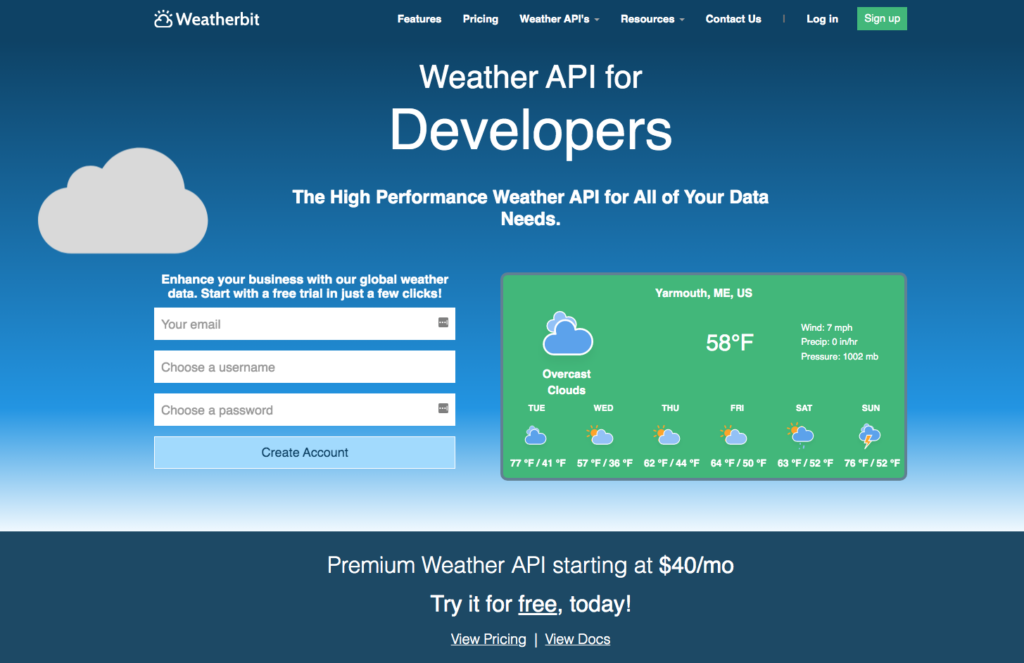In today's interconnected world, access to accurate weather information is vital for a multitude of industries and applications, from agriculture and transportation to tourism and event planning. Thankfully, with the proliferation of weather APIs (Application Programming Interfaces), developers and businesses can easily integrate real-time and forecasted weather data into their applications and services. While there are numerous paid options available, many developers prefer to start with free weather APIs to test their projects or for smaller-scale applications. In this comprehensive guide, we'll explore some of the best free weather API available, highlighting their features, limitations, and use cases.
1. OpenWeatherMap API:
OpenWeatherMap offers a generous free tier that provides current weather data, forecasts, and historical weather data for up to 5 days. With extensive global coverage and various data endpoints, including current weather, forecasts, and weather maps, OpenWeatherMap is a popular choice among developers. Its simple integration process and comprehensive documentation make it suitable for both beginners and experienced developers alike.
2. Weatherstack API:
Weatherstack provides access to current weather data and forecasts with a straightforward RESTful API. While its free tier offers limited features compared to its paid plans, it still includes essential weather information such as current conditions, forecasts, and historical data. Weatherstack's reliability and ease of use make it a popular choice for developers looking for a no-frills weather API.
3. Climacell Weather API:
Climacell offers a unique approach to weather data with its hyper-local forecasting technology, providing minute-by-minute weather updates for precise locations. While Climacell's free tier has usage limitations, including a limited number of API calls and data points, it remains a valuable option for developers seeking highly accurate and granular weather data.
4. Weatherbit API:
Weatherbit provides access to current weather, forecasts, and historical weather data with its free tier, albeit with some limitations on usage and data access. With global coverage and support for various weather parameters, Weatherbit is suitable for a wide range of applications, from mobile apps to IoT devices.
5. Meteomatics Weather API:
Meteomatics offers a feature-rich weather API with a generous free tier that includes access to current weather, forecasts, and historical data. With support for a wide range of weather parameters and advanced features such as weather routing and satellite imagery, Meteomatics is a preferred choice for developers seeking comprehensive weather data solutions.
Conclusion:
While the availability of free weather APIs provides developers with valuable resources for integrating weather data into their applications, it's essential to consider the specific requirements and limitations of each API. Whether you're building a mobile app, a website, or an IoT device, selecting the right weather API can significantly impact the accuracy and reliability of your weather data. By exploring the options mentioned above and assessing your project's needs, you can make an informed decision and unlock the power of real-time weather information in your applications.


No comments yet